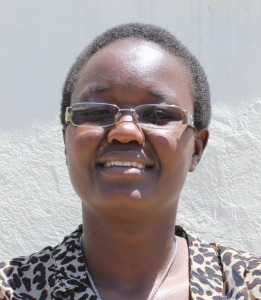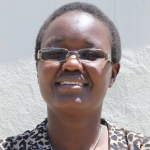In Machemo Community, the young and the old are most affected by their open spring's contaminated water, but all 250 people would benefit from cleaner, safer water.
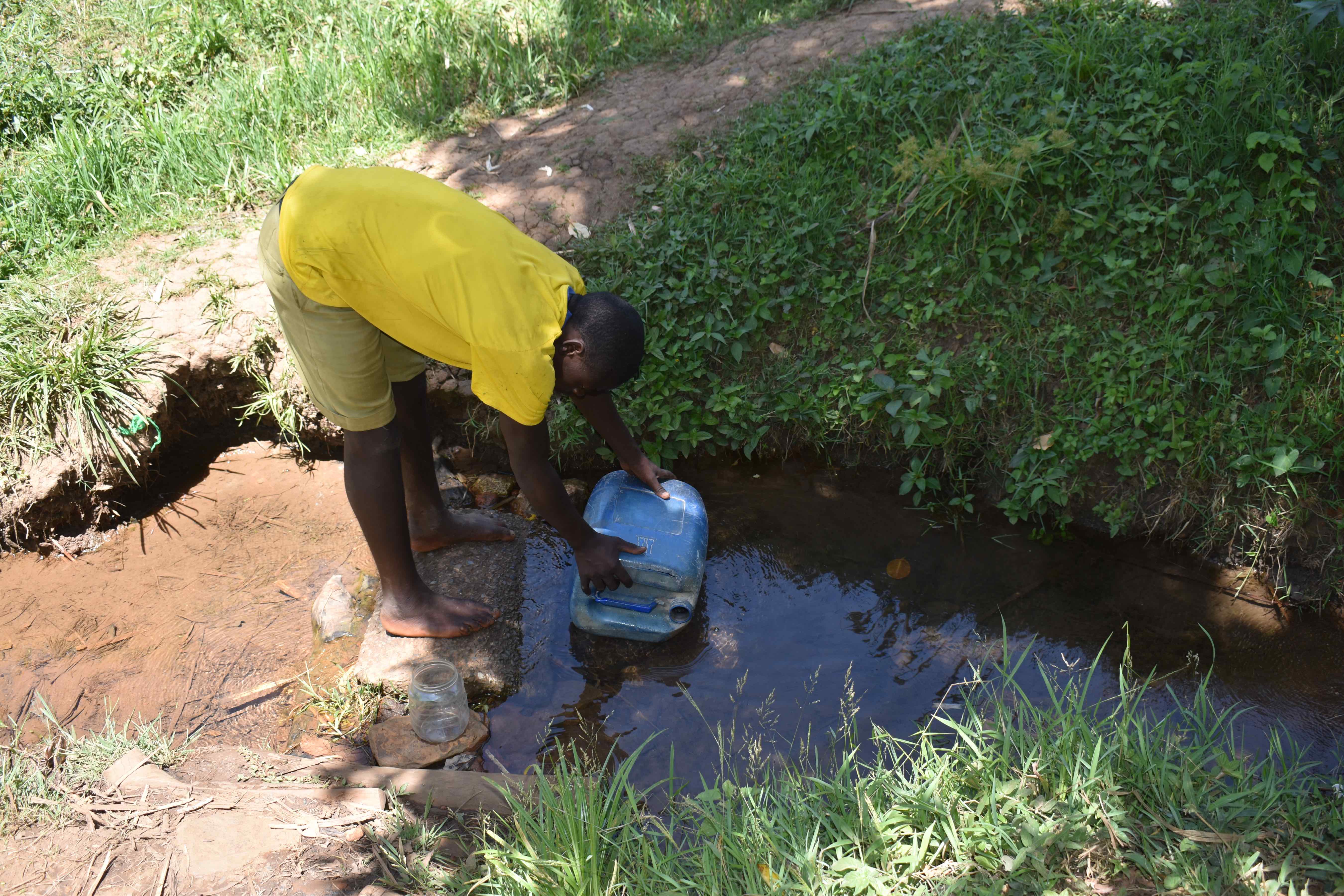
"Poor sanitation and drinking contaminated water has made me sickly," said Charles, a 13-year-old student (pictured above at the spring). "Most of the time, [I] am out of school. Like today, [I] am having [a] stomachache."
Consuming water from this source has led to illnesses such as gastroenteritis and diarrhea among the community members. During the rainy season, some community members also cough after using the water. They suspect it is because the water becomes dirtier when it rains and soil and fertilizer runoff enter the water, making it cloudy and opaque.
"Water is life, as the saying goes," said local farmer Franklin Mato, 51 (pictured at the spring, below). "But water can also take away life."
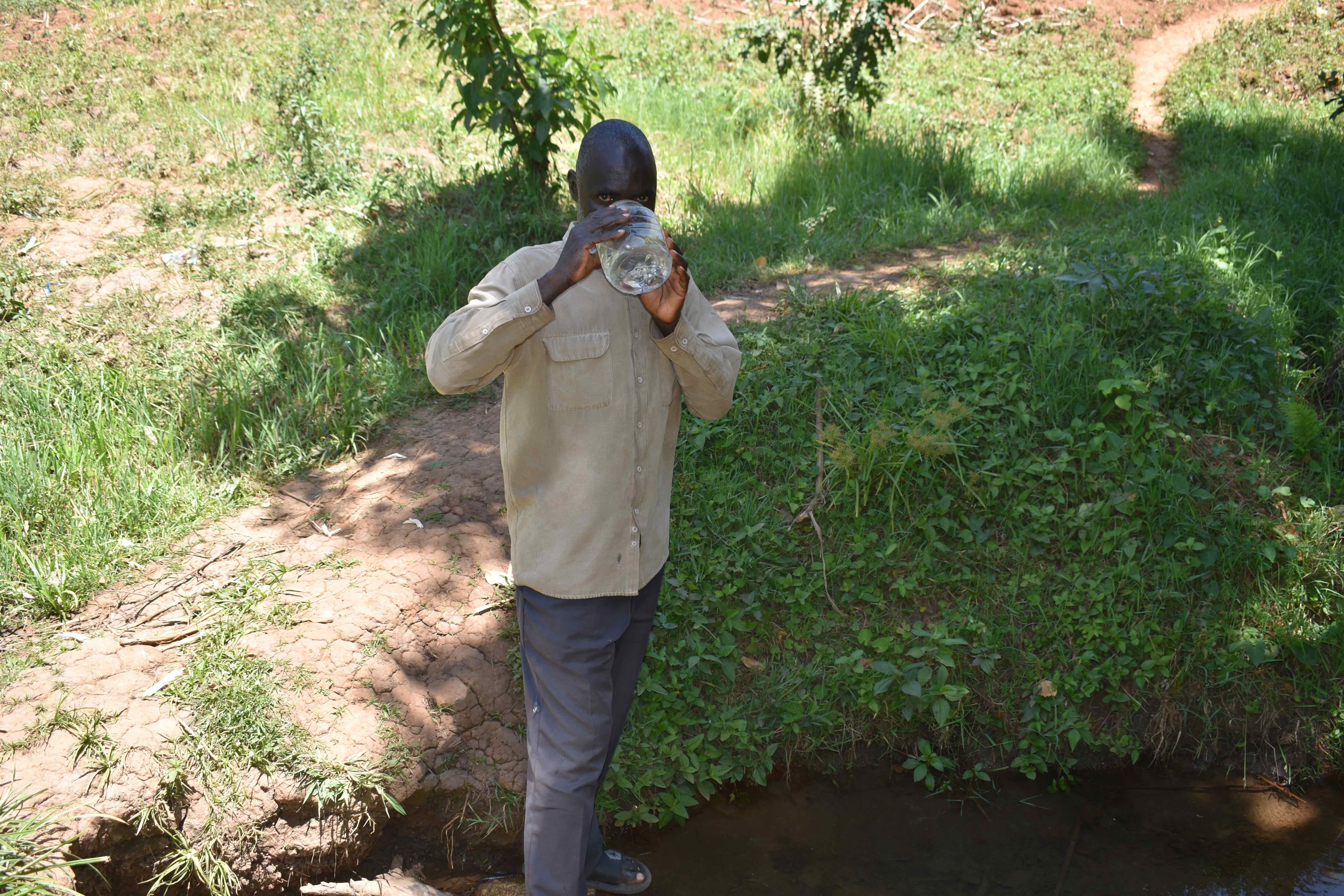
"The challenge is that the water is contaminated and my young children are suffering a lot," Franklin continued. "Protecting this spring will save me a lot, both financially and mentally."
The spring is situated on farmland, and is used as a staging area for women when they wash their families' clothing. As such, the area can become slippery from water even as the spring itself grows contaminated from soap, fertilizer, soil, sugarcane and maize trimmings, livestock, wildlife, and anything else that falls into the open water source.
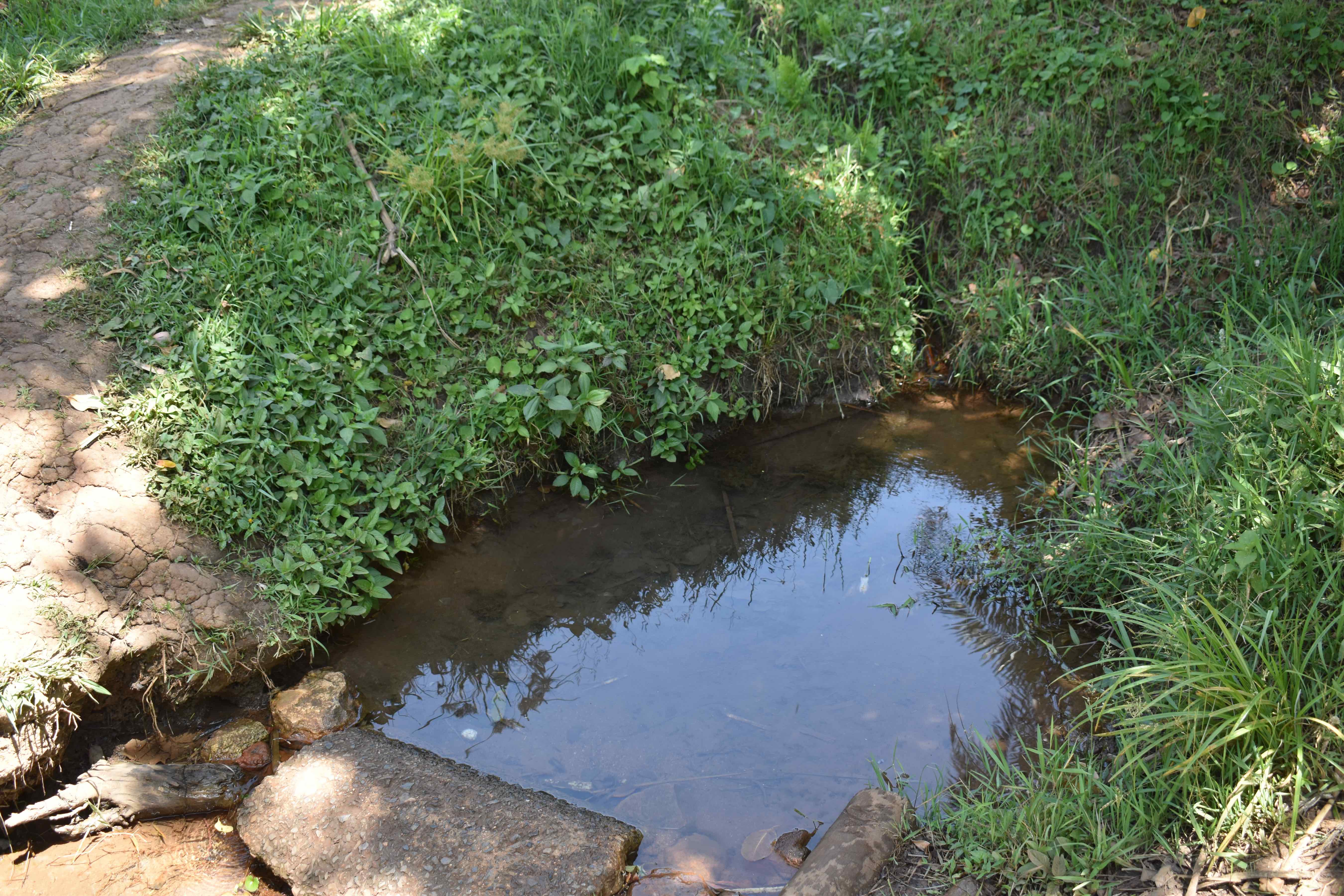
The women of Machemo Community get up very early to fetch drinking water, because that is when the spring appears clearest. But they might go back to the spring five or six times a day for other uses, which leads to overcrowding, and sometimes even conflicts about who should be able to fetch water first.
"I hope soon the problem will be over and I will be healthy and strong again to go back to school," Charles concluded.
What We Can Do:
Spring Protection
Protecting the spring will help provide access to cleaner and safer water and reduce the time people have to spend to fetch it. Construction will keep surface runoff and other contaminants out of the water. With the community’s high involvement in the process, there should be a good sense of responsibility and ownership for the new clean water source.
Fetching water is a task predominantly carried out by women and young girls. Protecting the spring and offering training and support will, therefore, help empower the female members of the community by freeing up more of their time and energy to engage and invest in income-generating activities and their education.
Training on Health, Hygiene, COVID-19, and More
To hold trainings during the pandemic, we work closely with both community leaders and the local government to approve small groups to attend training. We ask community leaders to invite a select yet representative group of people to attend training who will then act as ambassadors to the rest of the community to share what they learn. We also communicate our expectations of physical distancing and wearing masks for all who choose to attend.
The training will focus on improved hygiene, health, and sanitation habits in this community. We will also have a dedicated session on COVID-19 symptoms, transmission routes, and prevention best practices.
With the community’s input, we will identify key leverage points where they can alter their practices at the personal, household, and community levels to affect change. This training will help to ensure participants have the knowledge they need about healthy practices and their importance to make the most of their water point as soon as water is flowing.
Our team of facilitators will use a variety of methods to train community members. Some of these methods include participatory hygiene and sanitation transformation, asset-based community development, group discussions, handouts, and demonstrations at the spring.
One of the most important issues we plan to cover is the handling, storage, and treatment of water. Having a clean water source will be extremely helpful, but it is useless if water gets contaminated by the time it is consumed. We and the community strongly believe that all of these components will work together to improve living standards here, which will help to unlock the potential for these community members to live better, healthier lives.
We will then conduct a small series of follow-up trainings before transitioning to our regularly scheduled support visits throughout the year.
Training will result in the formation of a water user committee, elected by their peers, that will oversee the operations and maintenance of the spring. The committee will enforce proper behavior around the spring and delegate tasks that will help preserve the site, such as building a fence and digging proper drainage channels. The fence will keep out destructive animals and unwanted waste, and the drainage will keep the area’s mosquito population at a minimum.

 Protected Spring
Protected Spring
 Rehabilitation Project
Rehabilitation Project










